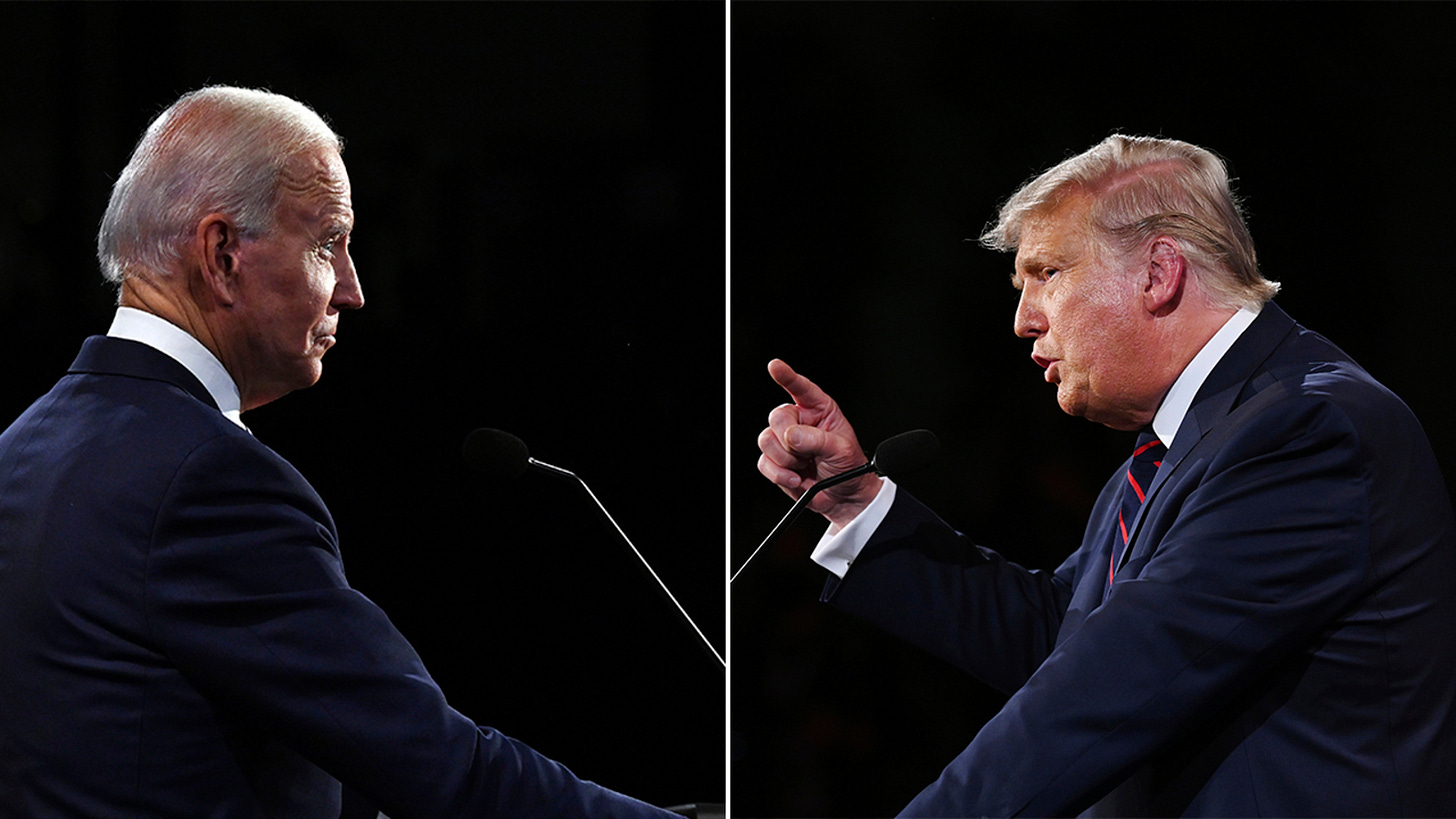Are The Democrats Doomed In 2024, Just Like Polls Suggest?
Analyzing the strengths and weaknesses of the Democrats going into the 2024 US Elections.
Just this morning, on the 7th of December, 2023, a new updated rating from Five Thirty-Eight, the website that keeps an aggregated rating of each president’s polling rating, indicated that Biden’s approval rating currently rests at 37.7%, the lowest in his presidency thus far. For comparison, Trump’s approval rating at the same point in his presidency was 43%.
With the election only a year away, its polls like this, combined with dwindling support among core Democratic constituencies, including young, Black and Hispanic voters, that are worrying Democratic strategists, hinting that the coalition that swept Biden to power in 2020 is fracturing. These warning signs have only been compounded by the decline, if not the erasure, of traditional Democratic advantages in representing the interests of the middle class and speaking for the average voter.
Democracy Corps, a Democratic advisory group, conducted a survey of 2,500 voters in presidential and Senate battleground states from Nov. 5 to Nov. 11. On 32 subjects, ranging from the economy to abortion to democracy, surveyed voters were asked to rank who they trusted more: Biden or Trump. The results of the survey illustrate a bleak reading of the Democratic Party’s fortunes going into the next election.
Biden and the Democrats only led on six issues: women’s rights (ahead by 17 percentage points), climate change (15 points), addressing racial inequality (10 points), health care (three points), the president will not be an autocrat (two points) and protecting democracy (one point). There was a tie on who would make democracy more secure.
Donald Trump and the Republicans, meanwhile, held leads on the remaining subjects, including being for working people (a seven-point advantage), standing up to elites (eight points), being able to get things done for the American people (12 points), feeling safe (12 points) and keeping wages and salaries up with the cost of living (17 points).
A more sanguine reading of the results is that the Democrats’ declining support can be explained by another factor. Compared to Republicans, Democratic voters are usually far more unforgiving and critical of their elected representatives, bringing the aggregated scores down. This has been reinforced by other polling. Biden’s plummeting approval rating isn’t attributable to a substantial shift amongst Republican, independent or swing voters, but by Democratic Party members, who have grown increasingly critical of his handling of the war in Gaza and the mental complications surrounding his age.
Despite all of this, Trump’s polling figures have stagnated, not improved. He’s still polling around 43-44%, just as he was earlier this year, suggesting that the former president is not benefitting directly from the decline in Biden’s approval ratings. This may be reflective of the fact that, since 2016, Trump has not made attempts to expand his voting coalition. Instead, he has doubled down on issues and rhetoric poisonous to most moderate, swing-voters - spewing out provocative statements, flirting with authoritarianism and surrounding himself with more extremist supporters.
The biggest worry for Democratic strategists isn’t members of their coalition drifting towards Trump, but large-scale abstention from voting in key swing states, a problem that befell Hillary Clinton’s campaign in 2016, when African-American voters in Detroit, Milwaukee and other urban areas across the rustbelt failed to match their turnout levels in 2012, gifting the states of Michigan, Wisconsin and Pennsylvania to Trump by the slimmest of margins. Apathy amongst key Democratic supporters is thus the biggest threat to Biden’s re-election campaign, not a resurgence of Trump.
In light of these disheartening predictions, Democratic insiders can point to several pieces of evidence to provide some relief that all hope is not lost. Since the overruling of Roe v Wade in summer 2022, Democratic candidates have over-performed in every single race held since then. During the 2022 midterms, for example, Democrats gained in Arizona, Colorado, Georgia, Michigan, Minnesota, New Hampshire, and Pennsylvania, compared to their performance in 2020, in what was supposedly a Republican-friendly political environment marked by high inflation and crime rates. This year has just been as sanguine, if not more so, with a Democratic-aligned judge (Wisconsin judges are ostensibly independent) receiving 56 percent in the Wisconsin SCOTUS race, the pro-choice side winning 57 percent in the abortion referendum in deep-red Ohio, Democratic candidates flipping the mayoral offices of Colorado Springs and Jacksonville and gaining control of the Virginia House. Even in deep-red Kentucky, Andrew Beshear, the incumbent Democratic governor, grew his margin of victory compared to his last race, despite Biden having a 40-point approval deficit in the state.
In an email, Jim Kessler, a senior vice president of Third Way, a Democratic think tank, observed that polls at this time need to be taken with a grain of salt — remarking that in 1991, George H.W. Bush appeared to be the prohibitive favorite to win a second term and that in 2011, Mitt Romney was well ahead of President Barack Obama. “The price of gasoline has fallen 20 cents to a national average of $3.24 a gallon. Headline and core inflation have begun their final descent toward benign, historic levels. Interest rates have fallen about 40 basis points in the past several months. The so-called misery index (inflation plus unemployment rate) could very well be at a level that is incumbent-friendly by the time of the election.
Instead, with the election still a year away, the underperformance of Biden and Democrats in these polls may represent a level of separation between voters and the election. Since the possibility of a second Trump presidency seems distant to many voters, it’s not considered as concerning as it once was in 2020. Many undecided voters may be under the false assumption that one of the other, more moderate GOP candidates could dethrone Trump in the primaries, or perhaps they’re hoping that one of Trump’s myriad of convictions may disqualify him from the race altogether. It’s not a stretch to predict that, once Democrats come to terms with the fact that Biden will be the nominee (and, more importantly, that Trump will in all likelihood be the G.O.P. nominee), a lot of the internal malaise expressed in current polls will likely dissipate, as the anti-Trump coalition coalesces around Biden, just as it did in 2020.
After all, fear of Trump’s return still permeates American society. Voters from across the political spectrum still resoundingly reject his claims of widespread voter fraud and the GOP’s extreme positions on abortion and climate change. As Trump begins to actively campaign, and media coverage once again descends on his rallies, voters will be given a stark contrast: the capable, reassuring governance of Biden will be paralleled with the divisive, inflammatory rhetoric of Trump, reminding less engaged Democrats and undecided independents that he is a deeply flawed figure who has and would again pose a real threat to not just American democracy but the social fabric of America itself.
For Democrats, the one ace in the hole, ironically, remains Donald Trump himself. As the center of attention in the elections of 2018, 2020 and even 2022, he was the catalyst behind Democratic victories, buoying them to historic margins in swing-states, even when the political environment didn’t favour them. Trump is doing all he can to become the focus in 2024, but the question remains whether the Democrats, with Biden at the top of the ticket, can successfully demonize him again. If they can, and manage to reconcile the divisions within their own voter coalition - a large task - then it is likely Democrats will triumph once again in 2024.




